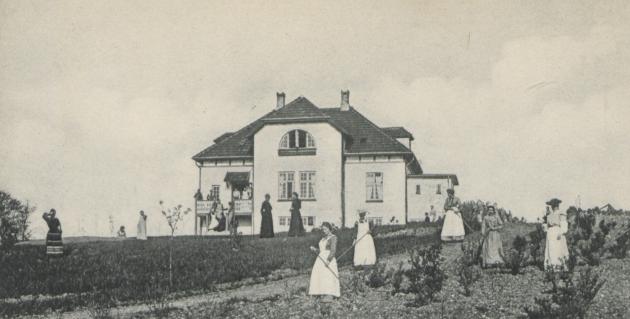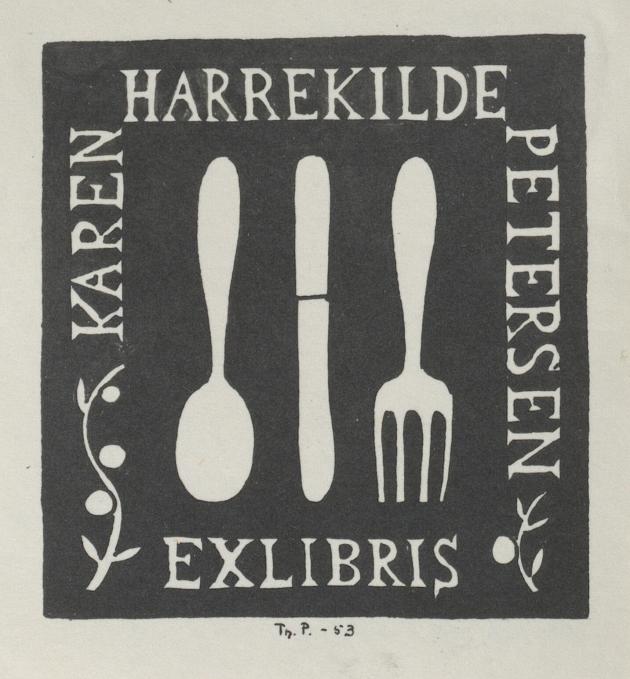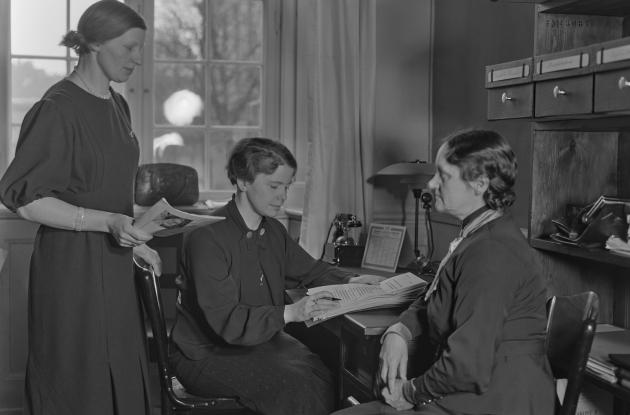Karen Harrekilde-Petersen
Karen Harrekilde-Petersen was head of the Specialist Course in Domestic Science at Aarhus University. Here, home economics was a serious science, sought after by women from all over the Nordic region.
The Danish Women's Society and a number of housekeeping organisations had been fighting for the establishment of a scientific home economics education since the beginning of the 20th century.
The idea was to have an education that could be compared to the educational programmes of the Veterinary and Agricultural College. Why should men learn more about ensuring the well-being of livestock than women should about human nutrition and health?

Photo: Warburgs Kunstforlag (1901-1911)
Karen Harrekilde-Petersen (1902-1986) studied at Ankerhus Home Economics Teacher Training College from 1924, graduated in 1926 and then became a consultant in the Federation of Sealand Smallholders' Societies.
In 1929 she travelled across the Atlantic to further her education at a number of Canadian and American universities. In 1936 she was employed by the newly established State Household Council, and in the following years she participated in its development.
In the first decades, all proposals for a domestic science course were rejected by both the Ministry of Agriculture and the Ministry of Education. But in the 1920s, the idea arose to establish the course at the new university in Aarhus. So, despite the fact that a head of department at the Ministry of Agriculture argued in 1933 that it would not be in the interest of Aarhus University to take on such a ‘dead weight’
, the course opened in 1945.

Photo: Thomas Pedersen (1900-1975)
Karen Harrekilde-Petersen was appointed head of the newly established Specialist Course in Domestic Science at Aarhus University.
As head of the Domestic Science course, Karen Harrekilde-Petersen led the practical construction and development of the education and under her leadership, home economics was established as a scientific education.
Physics and microbiology filled the schedule, as a student in the course's first class described in Aarhus Stifttidende in 1946: Every day we came to the University. We heard lectures and worked in the laboratories and here learned some of the secrets of nature.
As the first of its kind in the Nordic region, the course was applied for by women from all the Scandinavian countries who wanted to improve their job opportunities.
However, home economics was not initially recognised as an academic discipline. Instead of a two-year master's degree programme, as the Danish Women's Association had proposed, the programme was designed as three separate five-month courses. And although the teaching took place with university lecturers and on university campuses, the participants were not recognised as university students and were not given the opportunity to complete the programme with a final exam.
